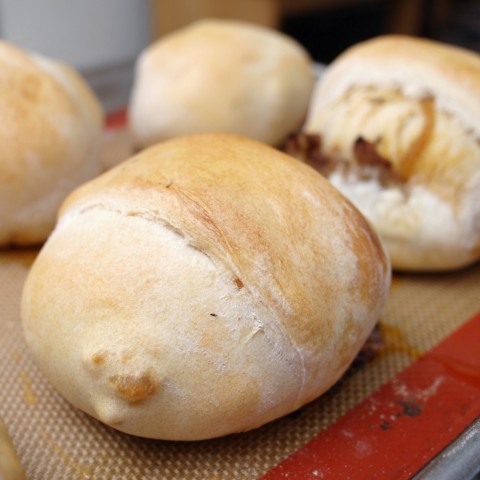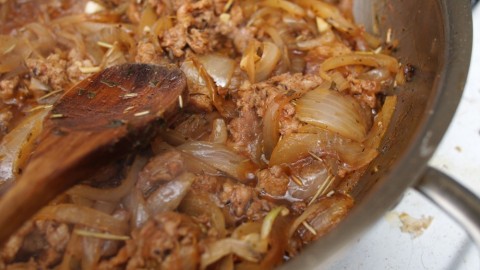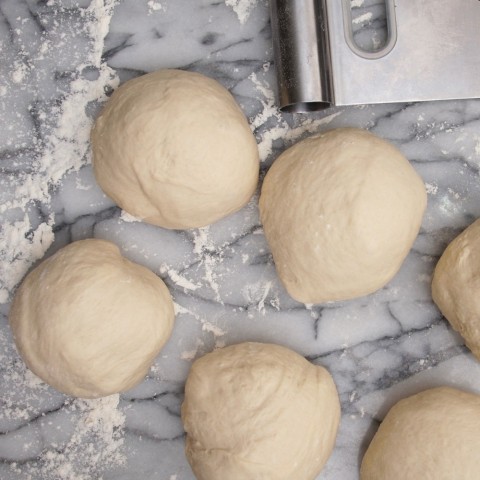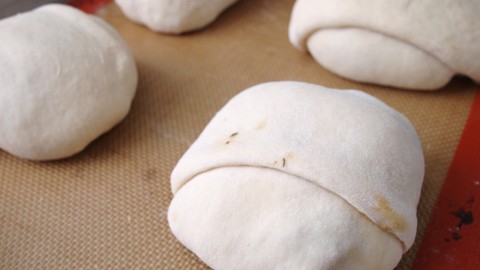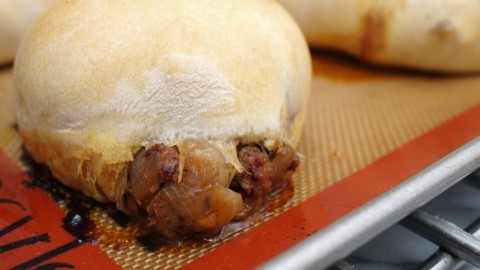You all know the story of the pasty, right? If you don’t, you should.
As I am given to understand it, this little jewel of meat and vegetable, wrapped in golden flaky crust, was developed by the families of Cornish miners as the original hot lunch-in-a-box. The wives of the miners (wives, of course, because this is the patriarchal past — as opposed to the patriarchal present) would pop a couple of them in the oven before dawn, then hand them to their husbands — wrapped in newspaper — on their way out the door. And the pasties would stay warm, all the way until lunch.
They’re still popular in England as a kind of fast-food option, filled with everything from meat and potatoes to curry. Or at least they were when last I was there. And they’re popular, too, in the United States, wherever Cornish miners and their families immigrated. So: Michigan, Wisconsin, Northerneastern Pennsylvania, and so on.
Today’s experiment — alas — is not a pasty. Nor is it one of the pasty’s dozens of equally interesting, possibly more famous cousins: the tamale, empanada, calzone, or the like. But it shares some history with its short-crusted cousin. And it certainly shares some inspiration. The point of stuffed bread — today’s recipe — is that it makes great, portable convenience food. Eaten directly out of the oven, it makes a satisfying breakfast, lunch, or dinner. Or pulled out of the oven and wrapped up, it’s great on road trips (where a knife and fork aren’t always a good option), or at work, or any time at all.
As you read through this recipe, you might consider that it is more a beginning than an end. The stuffed bread, as you see it here, will come out very well indeed. But to my mind, it is a sort of template from which to work. Depending on the season, and depending on your eating habits, you may wish to change the filling. Or you may wish to change the type of bread into which it gets stuffed. It is sort of a genre, stuffed bread is, and not one specific dish. So look, tinker, modify, and adapt. I know that I will, and that there is every likelihood that you’ll see other stuffed breads in this space — including, maybe, actual pasties — as time goes on.
For the bread:
550 grams AP White Flour
350 grams Water
1.5 tsp Salt
1/2 tsp Rapid Rise Yeast
1 Egg + 1 tsp of Water (for an egg wash)
For the Filling:
3 Sausage Links, cut into slices (I like Andouille)
2 Onions, sliced thinly
4 Cloves of Garlic, minced
1-2 tbsp Balsamic Vinegar
1/2 tsp Dried Thyme
1/2 tsp Dried Rosemary
1/2 tsp Dried Tarragon
1/4 tsp Cayenne Pepper
Olive Oil
Black Pepper
Salt
The night before: add 150 grams of the flour, 300 grams of the water, and the yeast to the work-bowl of your stand mixer (or to any medium-sized mixing bowl, if you don’t have a stand mixer). Stir together well, cover, and allow to sit on the counter overnight.
The day of: to that same bowl, add the rest of the flour and water, and the salt. Mix until all of the ingredients come together into a shaggy dough, then knead for about 10 minutes on medium-low in the stand mixer (or 15-20 minutes by hand), until the dough changes texture, becoming silky-smooth and elastic. Form the finished dough into a ball, place in a second bowl that has been lightly lubricated with vegetable oil, cover, and allow to rise for 2.5 to 3.5 hours, until it has just about tripled in size (the exact length of time will depend on the temperature of your kitchen).
About an hour before your dough has finished rising, heat a pan over a medium flame with some olive oil. Add the onions, herbs, cayenne and black pepper, and a little bit of salt, and cook, stirring occasionally, until the onions have thoroughly softened and have just started to brown. Then add the vinegar, garlic, sausage slices, and a little bit more salt and allow to cook together until the sausage is done and most of the liquid has evaporated from the pan. Remove from the heat and allow to cool to just warmer than room temperature.
While you’re waiting for the filling to cool, line a cookie sheet with parchment. Gently punch down your dough, and divide it into six equal pieces (they should be about 150 grams apiece). One ball at a time, on a floured surface, use a rolling pin to flatten your dough into a slightly oblong circle (sort of a wide oval, really).
To fill it, add 2 to 3 tablespoons of cooled filling to the center of the oval. Then wrap it up sort of like a burrito: bring the short sides of the dough together over the top of the filling; then stretch one of the larger flaps over the top of that; then roll it all up in the remaining flap, stretching it just a bit to cover as much of the filled dough ball as you can. As you finish each filled ball, remove it to the lined cookie sheet. And don’t worry about pinching them closed too much. If you make sure that their seams are facing down, they will hold themselves together.
When you have made all the filled balls, preheat your oven to 400F, cover the cookie sheet loosely with plastic wrap (or a moist towel), and allow the bread to proof for 55 minutes. At the end of that time, brush each ball lightly with the egg-wash, then place the cookie sheet into the oven, and allow the breads to bake for 25-30 minutes, until they are golden brown on top.
You can expect some minor spillage as the stuffed bread bakes. But no worries. That is part of their charm. They can be served directly out of the oven. Or they can be saved and reheated later, and they will be just as good.
Enjoy!
(You can, of course, find many more fabulous bread recipes through Wild Yeast’s YeastSpotting Archive!)
